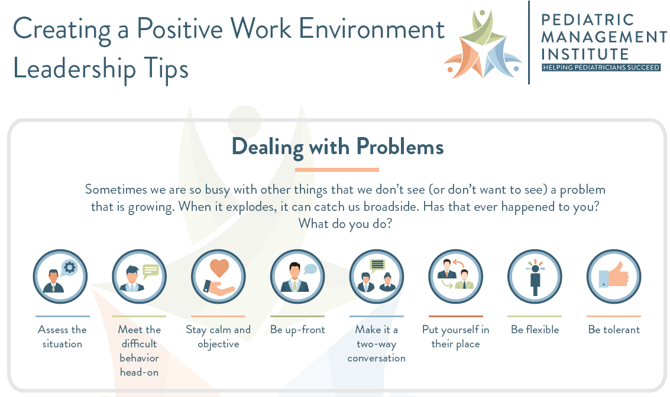Creating a Positive Work Environment
3:21
Creating a Positive Work Environment
The "Creating a Positive Work Environment" guide offers practical strategies for fostering a productive and enjoyable workplace. It highlights the importance of team collaboration, recognition, and effective communication, while providing tips for leaders and employees to contribute to a positive organizational culture.
The document provides strategies and tips for creating and maintaining a positive work environment. It emphasizes the importance of teamwork, recognition, dealing with problems effectively, and the roles of both leaders and employees in fostering a positive atmosphere.
Dealing with Problems:
- Assess the situation and address difficult behavior directly.
- Stay calm and objective, be up-front, and make it a two-way conversation.
- Show flexibility and tolerance, putting yourself in the other person's place.
Self-Assessment:
- A questionnaire helps individuals determine their preferences and comfort levels in dealing with difficult conversations and people.
Effective Team Member Guidelines:
- Listen and Share Information: Contribute ideas and solutions.
- Recognize and Respect Differences: Value diversity and different viewpoints.
- Ask Questions: Ensure understanding and effective contribution.
- Utilize Constructive Feedback: Give and receive positive suggestions.
- Do Your Work: Fulfill your responsibilities within the team.
- Have Fun: Enjoy the work to enhance productivity.
Importance of Recognition:
- Recognition motivates employees and fosters a positive work environment.
- It doesn’t have to be monetary; simple acknowledgments from managers are effective.
Creating a Positive Work Environment:
- As an Employee:
- Engage with coworkers, seek constructive feedback, be on time and organized, and be a team player.
- Promote diversity and be open to different viewpoints.
- As a Leader:
- Show respect and trust, be a coach, flexible, team builder, and show gratitude.
- Provide for employees' physical needs and model the desired behavior.
- Conduct team-building activities and create a fun, energetic environment.
Company as a Team:
- Engaged People: Everyone should work towards a common goal.
- Creative Environment: Foster creativity and effectiveness.
- Collaboration: Encourage understanding and cooperation.
- Clear Goals: Communicate end goals and involve employees in achieving them.
Leadership Tips for a Positive Environment:
- Show Employees They are Valued: Allow them to use their strengths and avoid micromanaging.
- Explain the Importance of Tasks: Connect daily tasks to team goals.
- Help Employees Reach Their Goals: Provide feedback and support.
- Be Flexible with Schedules: Accommodate employees’ needs when possible.
- Team-Building Activities: Regular non-work activities to strengthen team bonds.
- Show Gratitude: Small gestures, like gift cards, can boost morale.
- Improve Physical Work Space: Allow employee input on their workspace environment.
- Maintain Professionalism: Be clear, keep issues private, and treat all employees fairly.
Conclusion: Creating a positive work environment requires effort from both leaders and employees. By fostering respect, teamwork, recognition, and effective problem-solving, organizations can enhance employee satisfaction and productivity.


